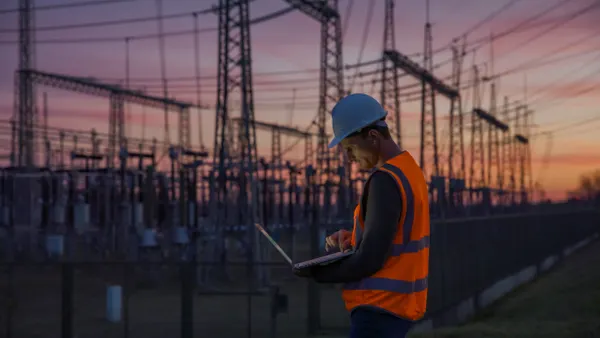Dive Brief:
- California regulators on Thursday voted to approve a financing order giving Pacific Gas & Electric Co. the official go-ahead to securitize $7.5 billion in costs related to wildfires caused by its power lines in 2017.
- The securitization would pave the way for PG&E to retire about $6 billion in debt and accelerate final payments to victims of the wildfires, the utility said in its application to the California Public Utilities Commission (CPUC). But consumer advocates, who have raised concerns about the proposal’s impact on ratepayers, are in the process of challenging it.
- Regulators usually allow utilities to securitize costs only if the costs are supposed to be the responsibility of ratepayers, said Tom Long, legal director with The Utility Reform Network, “but this one is unique … because this is to securitize costs that are supposed to be paid solely by shareholders.”
Dive Insight:
The financing order the commission approved this week is the second of two decisions that pave the way for PG&E to issue ratepayer-backed recovery bonds to recover those wildfire costs. Last month, regulators determined that the $7.5 billion qualifies for its “stress test” process, which allows the CPUC to consider a utility’s financial position before deciding the extent of wildfire costs it should have to bear.
The utility’s plan to issue up to $7.5 billion in recovery bonds will add $394 million annually to ratepayer bills for the next 30 years. To offset that charge and ensure that the securitization is neutral to ratepayers, PG&E plans to set up a shareholder-funded trust, which will pay out monthly credits to its customers. PG&E will put $1 billion into the trust this year; $1 billion before March 31, 2024; and an additional nearly $7.6 billion down the road, derived from certain shareholder-owned tax deductions or net operating losses. The CPUC has also left open the possibility of requiring PG&E to add up to $775 million to the trust in 2040.
“The Commission’s approval of PG&E’s application saves customers money by improving PG&E’s creditworthiness, which will allow us to continue making critical safety and reliability improvements in its electric system at the lowest possible cost to our customers,” PG&E spokesperson James Noonan said in an emailed statement.
The decision confirms that PG&E’s proposal is rate-neutral and will not increase energy bills while strengthening the utility’s business going forward, Noonan added.
But the securitization proposal has prompted concerns from ratepayer advocates, who are skeptical of PG&E’s plan to reimburse ratepayers for the charges they will face. At a CPUC meeting in April, TURN’s Long said that the group’s modeling indicates a 40% chance that the planned trust will have a shortfall, in which case customers would be saddled with an average of nearly $2 billion — as opposed to PG&E’s estimated 16% chance of a shortfall, with risks in the range of $20 million to $30 million.
Utility securitizations are not very common — only about 20 of them have been carried out around the country, said April Rose Maurath Sommer, executive and legal director of the Wild Tree Foundation. All of them to date have been for costs that ratepayers would be paying for anyway, like nuclear decommissioning or hurricane recovery, she added.
“That is not the situation here. Of course, had the commission done the right thing and denied PG&E a securitization, ratepayers would have paid nothing for the victim claim costs that are being covered under this bond,” Maurath Sommer said.
Earlier this week, TURN filed an application with the commission requesting that it rehear the first decision on the securitization because it “is riddled with legal errors that evidently result from the fact that it was hastily prepared and decided.”
“We hope the commission fixes that atrocious decision, but if they don’t, we’ll go to court. And we’re going to do the same for the decision they voted out today because they’re two peas in a pod,” Long said.
The Wild Tree Foundation and City and County of San Francisco also filed requests for the CPUC to rehear the decision.
Regarding TURN’s request, “we’re aware of the application and believe it should be denied,” PG&E’s Noonan said.
PG&E expects to issue the securitized debt later this year or in early 2022, although that hinges on when challenges to the decision are resolved, PG&E Corp. Executive Vice President and Chief Financial Officer Chris Foster told analysts during the company’s recent earnings call.














